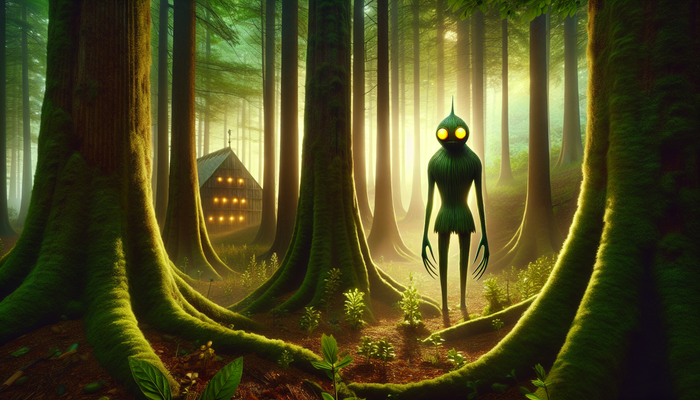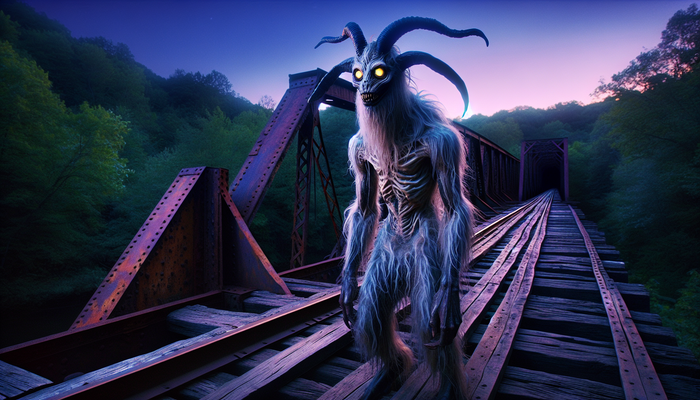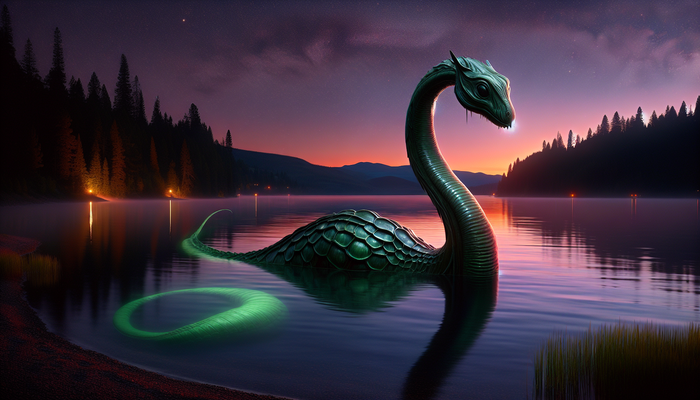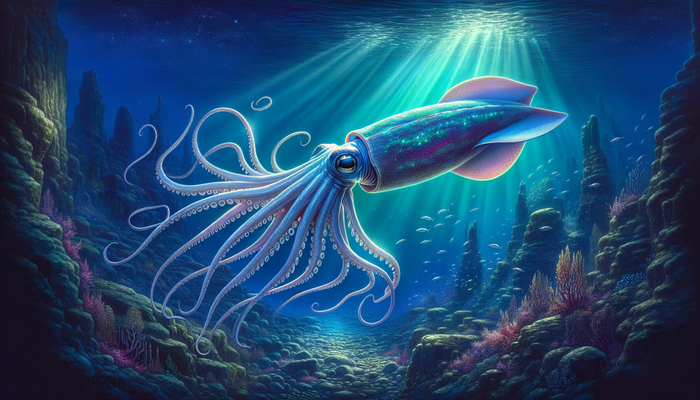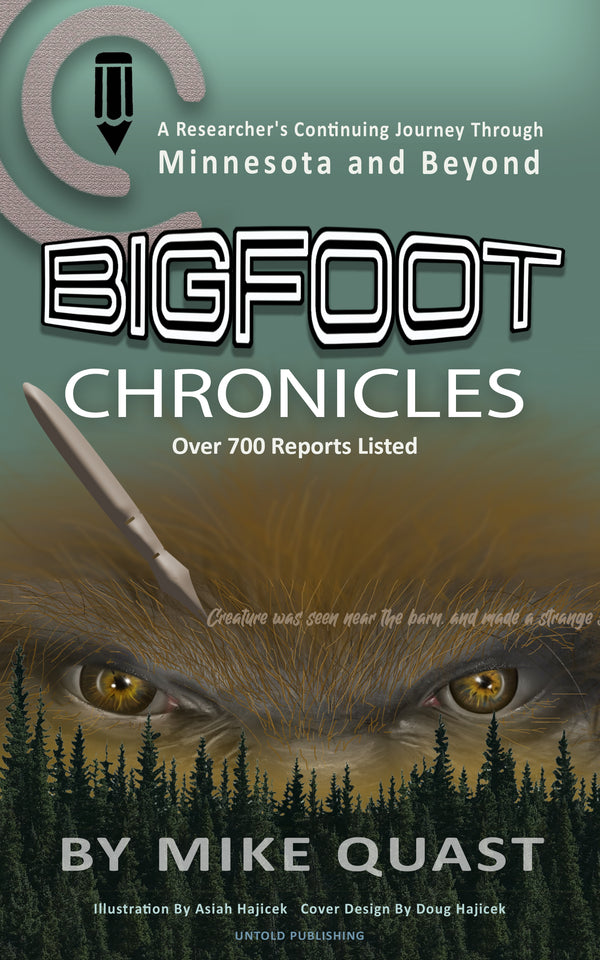The World's Largest Freshwater Giant Crayfish
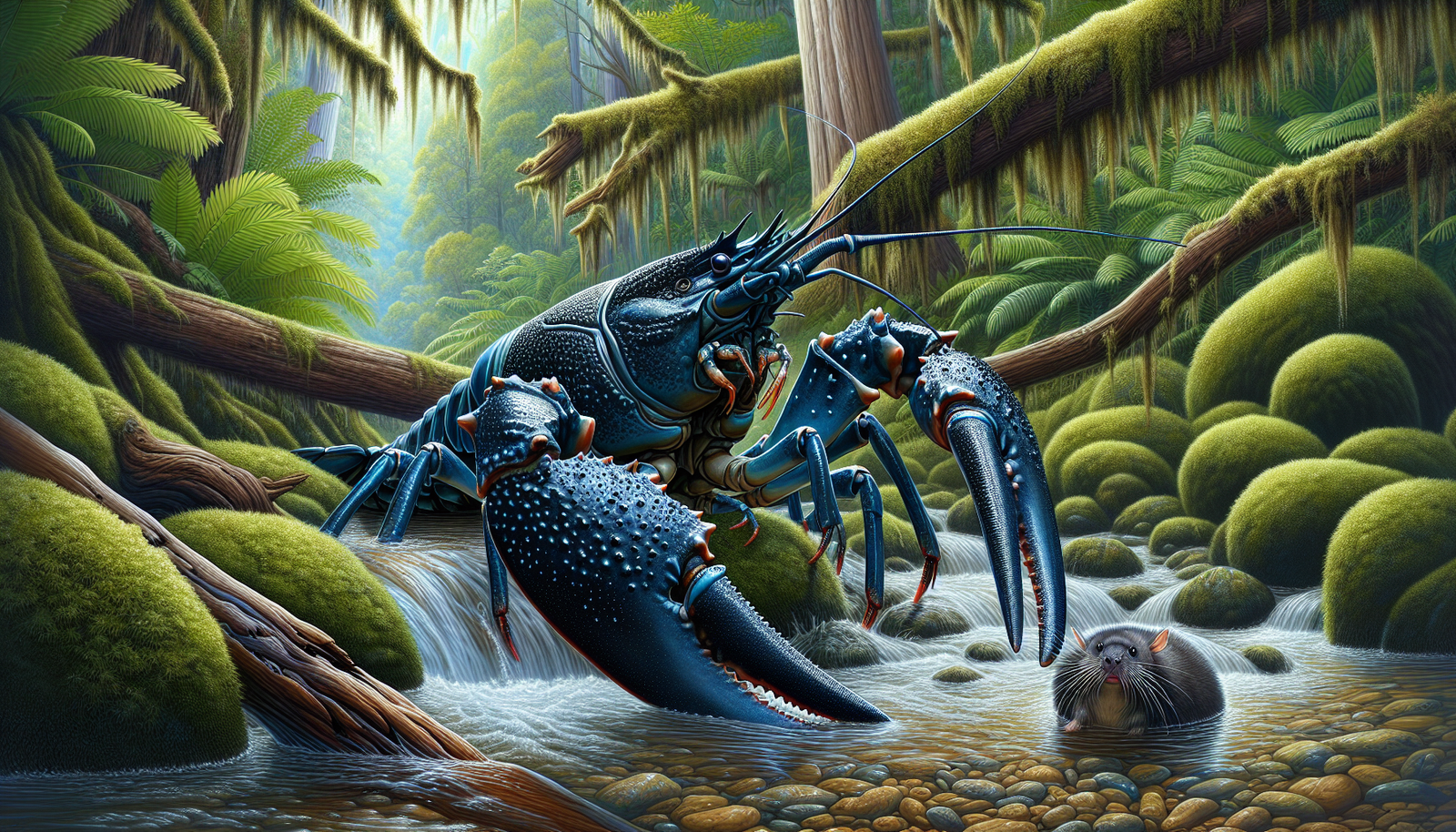
By Dr. Elizabeth Harper, Cryptozoologist and Biologist
Imagine a crustacean the size of a small dog lurking in the depths of cool, pristine rivers - a creature with claws so massive they could snap your finger like a twig. This is no mere figment of the imagination, but a very real denizen of the freshwater realm. I'm talking about giant crayfish, some of the most fascinating, yet imperiled, aquatic animals on Earth.
As a wildlife biologist with a penchant for the mysterious, I've long been captivated by these oversized invertebrates. They are the stuff of legend, with tales of monstrous "lobsters" reaching up to 6 kg (13 lbs) and stretching over 80 cm (31 in) from claw to tail. While such behemoths are now exceedingly rare, even today's largest specimens are enough to give one pause. These are no mere crawdads or mudbugs, but true titans of the freshwater world.
In this article, I invite you to join me on a deep dive into the realm of giant crayfish. We'll explore their biology and ecology, the threats they face, and the urgent efforts to conserve them. Along the way, we'll meet some of the most impressive species and uncover the secrets behind their colossal claws. So grab your waders and let's plunge in!
The Titans of the Freshwater Realm
When it comes to giant crayfish, one species reigns supreme: the Tasmanian giant freshwater crayfish (Astacopsis gouldi). Found only on the island state of Tasmania in southern Australia, this bruiser is the largest freshwater invertebrate on the planet. Historical records tell of specimens weighing up to a staggering 6 kg (13 lbs) and measuring over 80 cm (31 in) in total length - dimensions more befitting a lobster than a crayfish.
While such leviathans are now the stuff of legend, even modern-day A. gouldi are nothing to sneeze at. Researchers commonly encounter individuals in the 2-3 kg (4.4-6.6 lbs) range, with the occasional 4-5 kg (8.8-11 lbs) whopper thrown in for good measure. To put that in perspective, the average American lobster (Homarus americanus) tips the scales at around 0.5-1 kg (1-2 lbs). So we're talking some serious poundage here.
But the Tasmanian giant freshwater crayfish is far from the only supersized species out there. Australia boasts several other contenders for the heavyweight crown, including:
- The Murray crayfish (Euastacus armatus) of the southeastern mainland, which can reach 2.5 kg (5.5 lbs)
- The Lamington spiny crayfish (Euastacus sulcatus) of Queensland, which tops out around 3 kg (6.6 lbs)
Even beyond Australia, there are some impressively large crayfish species:
- The signal crayfish (Pacifastacus leniusculus) of western North America can exceed 16 cm (6.3 in) and weigh up to 0.5 kg (1 lb)
- The noble crayfish (Astacus astacus) of Europe has been known to reach 30 cm (12 in) and 1.5 kg (3.3 lbs)
What do all these giant crayfish have in common? For one, they tend to be found in cool, clean, well-oxygenated waters - think pristine streams tumbling down from forested mountains or spring-fed rivers winding through limestone valleys. In many ways, these crustacean colossi serve as indicator species for the health of their freshwater ecosystems. Where giant crayfish thrive, it's a good bet the water is in tip-top shape.
Ancient Origins and Primeval Appearance
To gaze upon a giant crayfish is to catch a glimpse of deep time. These ancient animals are relicts of the bygone supercontinent Gondwana, which began to break apart some 180 million years ago. As the landmasses drifted and the world changed around them, giant crayfish persisted, tucked away in the cool, damp refugia of places like Tasmania and the Australian mainland.
In this sense, they are true living fossils, windows into a distant past when dinosaurs still roamed the Earth and mammals were but tiny, furtive creatures scurrying in the shadows. Giant crayfish have outlasted not only the terrible lizards, but also the megafauna of the more recent past - the mammoths, mastodons, and saber-toothed cats that vanished at the close of the last ice age.
Perhaps it's no surprise, then, that giant crayfish have a rather primeval appearance. With their heavily armored bodies, spiny carapaces, and eyes on stalks, they look more like miniature lobsters or even prehistoric sea scorpions than typical crayfish. And then there are those claws - massive, bone-crushing pincers that would put a Rottweiler's jaws to shame. When a giant crayfish rears up in defensive posture, pincers raised and ready to strike, it's an intimidating sight indeed.
But there's more to these ancient animals than just their imposing looks. Giant crayfish are also marvels of evolution, with a host of adaptations that have allowed them to thrive in their watery domain for eons. From their keen sense of smell to their ability to regenerate lost limbs, these crustaceans are superbly equipped for life in the freshwater fast lane.
Ecology and Behavior of Giant Crayfish
So what do these colossal crayfish actually do all day? Well, for starters, they're not exactly social butterflies. Giant crayfish are solitary and territorial creatures, fiercely defending their chosen stretch of stream from intruders. When two big males meet, the result is often a no-holds-barred brawl, with claws clanging like knights' swords until one combatant backs down.
Most of the time, though, giant crayfish lead a more sedate existence. They spend their days lurking in deep, still pools, hidden beneath submerged logs and undercut banks. These crevices and cavities offer sanctuary from predators and a cool, damp refuge during the heat of the day. At night, the crayfish emerge to forage, using their sensitive antennae to taste the water for signs of food.
And what a smorgasbord they have to choose from! Giant crayfish are opportunistic omnivores, which is a fancy way of saying they'll eat just about anything they can get their claws on. The bulk of their diet consists of decaying plant matter like fallen leaves and waterlogged wood, which they shred with their powerful mandibles and claws. But they're not above a little carnivory now and then. Small fish, aquatic insects, even other crayfish are all fair game. There are even reports of giant crayfish catching and consuming eels!
In many ways, giant crayfish act as the garbage disposals of their ecosystems, breaking down coarse organic matter and recycling nutrients back into the food web. They are key shredders and decomposers, playing a vital role in the complex dance of energy and elements that keeps freshwater systems humming along.
But life isn't all just eating and hiding for these crustaceans. Giant crayfish also have a rather unique reproductive strategy. Unlike many of their smaller kin, which breed annually, giant crayfish take a "slow and steady" approach to procreation. Tasmanian giant freshwater crayfish, for instance, can live upwards of 60 years, but they don't even reach sexual maturity until they're 9 (for males) or 14 (for females) years old! Even then, females only mate and lay eggs every other year. Talk about playing the long game.
When a female is ready to breed, she seeks out a secluded spot to release pheromones into the water, attracting amorous males. After mating, she lays her eggs and attaches them to her swimmerets (the feathery appendages under her tail) using a special glue. For the next 9-12 months, she will carefully tend to her brood, aerating the eggs with gentle fanning motions and keeping them clean of debris and fungi.
When the eggs finally hatch, the tiny crayfish larvae still have a ways to go. They cling to their mother's swimmerets for several more months, growing and molting until they're ready to strike out on their own. Even then, they're highly vulnerable to predation by fish, platypus, water rats, and even other crayfish. It's a tough world out there for a little crustacean!
As adults, giant crayfish have few natural predators, thanks to their impressive size and armored exteriors. In fact, they often act as the apex invertebrate predators in their ecosystems, exerting a top-down influence on community structure and dynamics. But their ecological importance goes beyond just eating and being eaten. By shredding organic matter, burrowing in the sediment, and simply moving about, giant crayfish also help to mix and oxygenate the substrate, enhancing habitat quality for a host of other aquatic organisms.
Conservation Challenges and Concerns
For all their toughness and tenacity, giant crayfish are far from invincible. In fact, many species are now staring down the barrel of extinction, thanks to a perfect storm of threats that have converged in recent decades.
Foremost among these is overfishing. For much of the 20th century, giant crayfish were heavily exploited for food and bait, with little to no regulation on catch sizes or numbers. In Tasmania, for instance, recreational fishers could legally take up to 12 A. gouldi per day until the 1990s! Not surprisingly, populations plummeted as the biggest, most reproductively valuable individuals were selectively removed.
Today, most giant crayfish species are protected by law, with stiff penalties for poaching. But old habits die hard, and illegal fishing remains a persistent problem. Enforcement is often spotty, particularly in remote areas, and the temptation of a quick buck (or a tasty meal) can be hard to resist for some.
But even if we could wave a magic wand and stop all fishing overnight, giant crayfish would still be in hot water (pun intended). That's because their freshwater habitats are under siege from a host of human activities, from logging and mining to agriculture and urbanization.
In many parts of their range, giant crayfish rivers are being hammered by sediment pollution, as soil erodes from denuded hillsides and washes into streams. This fine silt clogs the nooks and crannies that juvenile crayfish need for shelter, smothering them or forcing them out into the open where they're easy pickings for predators. Sediment can also damage crayfish gills and interfere with their ability to breathe.
Then there are the dams, weirs, and culverts that fragment so many waterways these days. These structures can block the movement of giant crayfish, isolating populations and preventing them from recolonizing areas where they've been wiped out. Over time, this can lead to inbreeding and genetic erosion, making the crayfish even more vulnerable to disease and environmental stress.
And speaking of stress, let's not forget the looming specter of climate change. As the world warms, many of the cool, shaded streams that giant crayfish call home are becoming increasingly inhospitable. Droughts are becoming more frequent and severe, causing some rivers to dry up completely or shrink to a trickle. When the rains do return, they often come in the form of intense downpours that scour streambeds and flush away hiding spots.
Even in rivers that don't run dry, rising temperatures can spell trouble for these cool-adapted crustaceans. Studies suggest that A. gouldi, for instance, starts to experience physiological stress at water temperatures above 18°C (64°F). As heatwaves become more common and stream temperatures climb, giant crayfish may simply cook in their own juices.
But wait, there's more! As if habitat loss, overfishing, and climate change weren't enough, giant crayfish also have to contend with invasive species and disease. Non-native crayfish, often introduced through the aquarium trade or as bait, can outcompete and displace their larger cousins, spreading like aquatic weeds. Some of these interlopers also carry crayfish plague, a devastating fungal disease that has wiped out entire populations of native European crayfish. While the susceptibility of giant crayfish to this pathogen is not well understood, it's a looming threat that conservationists are watching closely.
Glimmers of Hope: Conservation Efforts and Initiatives
But before we all sink into a pit of despair, let me offer a few rays of hope. Yes, the challenges facing giant crayfish are daunting, but there are also some truly inspiring efforts underway to save these freshwater wonders.
First and foremost are the legal protections and fishing bans that have been put in place in recent decades. In Tasmania, for instance, it's been illegal to catch or possess A. gouldi without a permit since 1998. Similar measures are in place for the Murray crayfish and Shasta crayfish on the Australian mainland and in California, respectively. While enforcement remains a challenge, these laws have undoubtedly helped to stem the tide of overfishing and poaching.
But we can't just legislate our way out of this crisis. To really move the needle, we need boots on the ground (or waders in the water, as it were). That's where habitat restoration and management come in. Around the world, conservationists and land managers are working to restore degraded crayfish streams by replanting riparian vegetation, stabilizing eroding banks, and removing obsolete dams and other barriers. The goal is to create a network of healthy, connected waterways where giant crayfish can once again thrive.
Of course, none of this is possible without good science to guide the way. That's why research and monitoring programs are so critical. By tracking crayfish populations over time, scientists can identify key threats and prioritize areas for conservation. Genetic studies can help us understand how different populations are connected (or not) and inform strategies for translocation and captive breeding. And by studying the thermal tolerances and disease susceptibility of giant crayfish, we can better predict how they'll fare in a warming world and develop strategies to boost their resilience.
But perhaps the most important piece of the puzzle is community engagement and awareness. At the end of the day, the fate of giant crayfish rests in the hands of the people who live, work, and play in their watersheds. By involving local communities in citizen science initiatives, outreach programs, and even sustainable harvest schemes, conservationists can build a groundswell of support for these charismatic crustaceans.
One particularly promising approach is to position giant crayfish as flagship species for freshwater conservation. With their impressive size, prehistoric appearance, and outsized ecological importance, these animals have the power to capture the public imagination and generate support for protecting entire watersheds. By rallying around these aquatic ambassadors, we can leverage their charisma to drive real, lasting change.
From Bigfoot to UFOs: Hangar 1 Publishing Has You Covered!
Explore Untold Stories: Venture into the world of UFOs, cryptids, Bigfoot, and beyond. Every story is a journey into the extraordinary.
Immersive Book Technology: Experience real videos, sights, and sounds within our books. Its not just reading; its an adventure.



